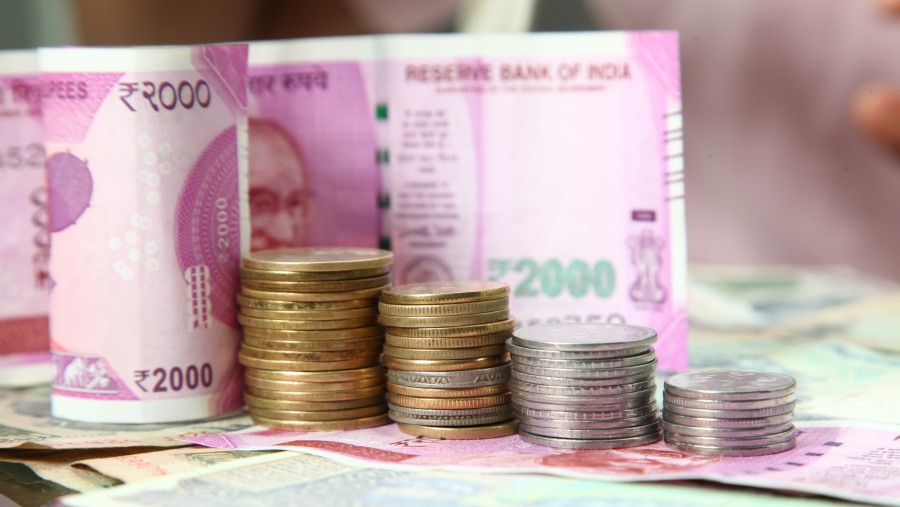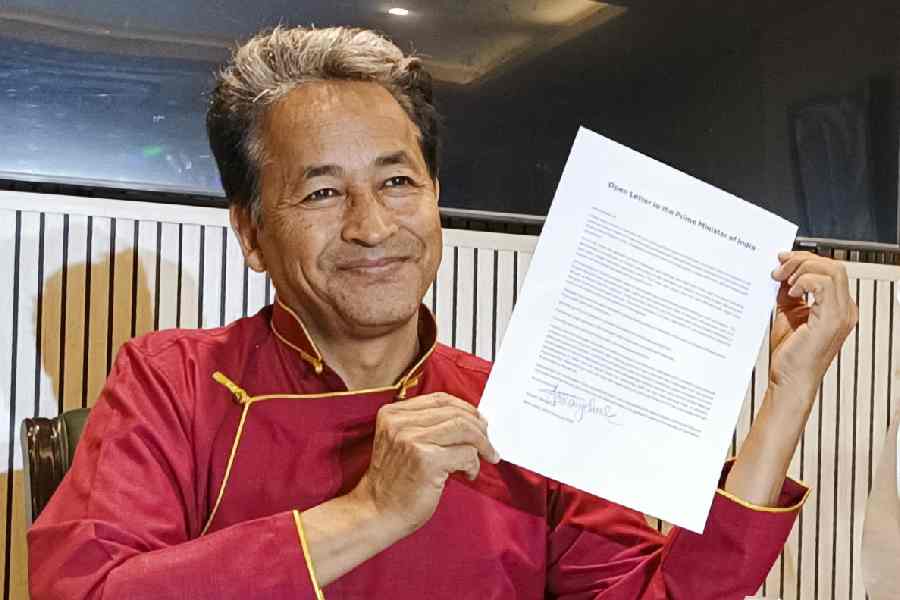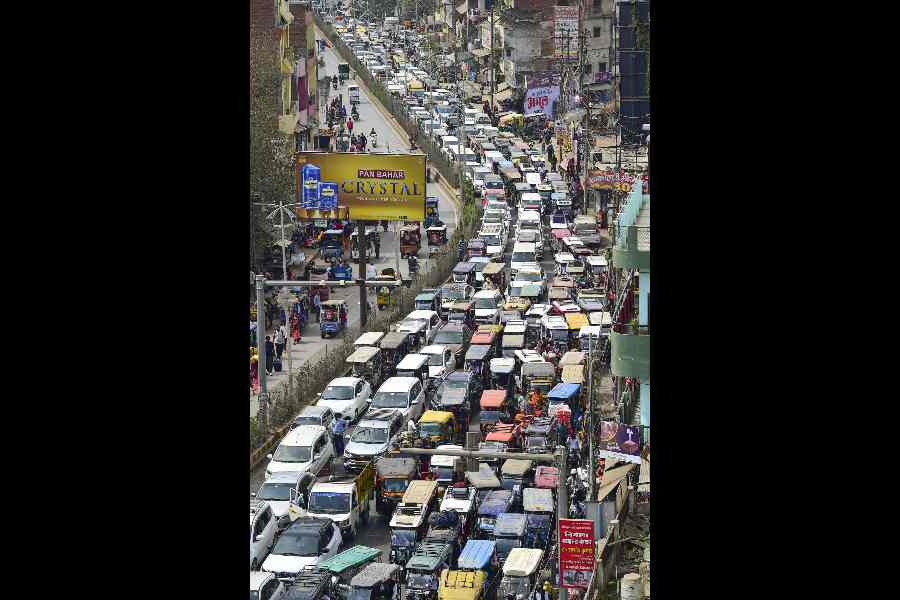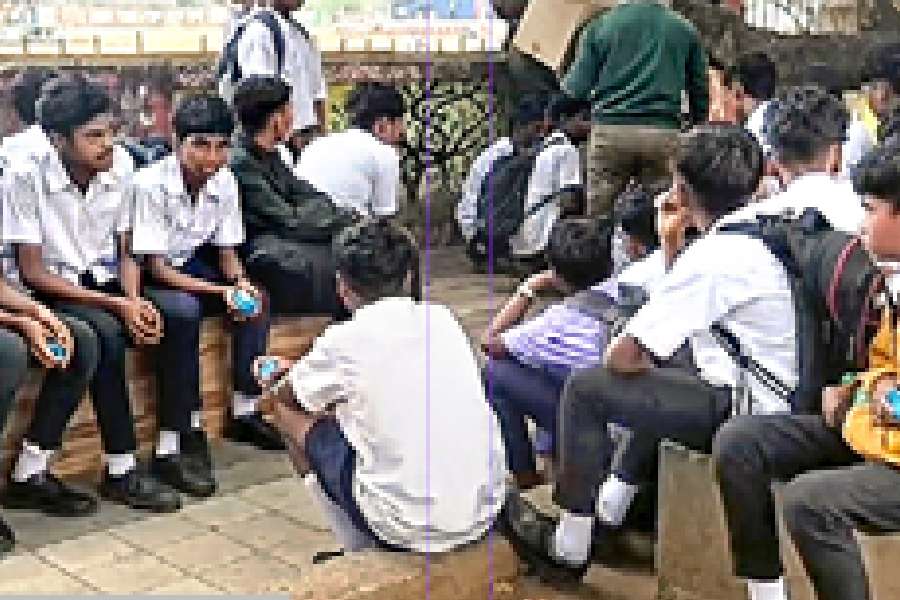The government will borrow Rs 5.03 lakh crore in the second half of the current fiscal to fund the revenue gap for reviving the pandemic-hit economy, the finance ministry said on Monday.
During the first half (April-September), the government has raised Rs 7.02 lakh crore by issuing bonds, the ministry said in a statement.
"Out of gross market borrowing of Rs 12.05 lakh crore projected for FY 2021-22 in the Union Budget, Rs 7.24 lakh crore (60 per cent) was planned to be borrowed in first half (H1).
"The effective borrowing in H1 of FY 2021-22 was Rs 7.02 lakh crore. The Government now plans to borrow the balance Rs 5.03 lakh crore in second half year (H2) of FY 2021-22," it said.
The H2 projection also factors requirements for release of balance amount to states on account of back-to-back loan facility in-lieu of GST compensation during the year, it said.
During the first half, the Centre has released Rs 75,000 crore to states and union territories (UTs) under the back-to-back loan facility in lieu of GST compensation.
The remaining Rs 83,000 crore out of Rs 1.58 lakh crore has to be distributed to states and UTs in the second half beginning October 1.
The statement further said borrowing will be spread under 2, 5, 10, 14, 30 and 40-year securities and floating rate bonds (tenors of 7-8 and 13 years). It will be done in 21 weeks in tranches of Rs 24,000 or 23,000 crore per week.
"The share of borrowing under different maturities will be: 2 years: 4 per cent; 5 years: 11.9 per cent; 10 year: 28.4 per cent; 14 year: 17.9 per cent; 30 year: 13.9 per cent; and 40 year: 15.1 per cent.
"Borrowing under Floating Rate Bonds will be 8.8 per cent. The Government will issue another Floating Rate Bond of 7-8 years, in addition to 13-year. Both will be issued on alternate basis," it said.
According to the Budget for 2021-22, the government's gross borrowing was estimated at Rs 12.05 lakh crore, while net borrowing was pegged at Rs 9.37 lakh crore in the financial year beginning April 1.
Gross borrowing includes repayments of past loans. Repayment for past loans in the next financial year has been pegged at Rs 2.80 lakh crore.
The government raises money from the market to fund its fiscal deficit through dated securities and treasury bills.
The Budget has estimated fiscal deficit at 6.8 per cent for the current fiscal, down from 9.5 per cent of the GDP projected for FY21. However, the actual fiscal deficit for 2020-21 came in lower at 9.3 per cent of the gross domestic product (GDP).
According to the statement, the government will continue to carry out switching of securities to smoothen redemptions in coming years.
"Weekly borrowing under Treasury Bills in third quarter of FY 2021-22 is expected to be Rs 20,000 crore with net borrowing of (-) Rs 1.04 lakh crore during the quarter.
"There will be issuance of Rs 10,000 crore under 91 DTBs (Days Treasury Bills), Rs 3,000 crore under 182 DTBs; Rs 7,000 crore under 364 DTBs during the quarter," it said.
To take care of temporary mismatches in government account, it said, the Reserve Bank of India (RBI) has fixed the Ways and Mean Advance (WMA) limit for H2 at Rs 50,000 crore.
The RBI, in a separate statement, said it may trigger fresh floatation of market loans when the Government of India utilises 75 per cent of the WMA limit.
The central bank retains the flexibility to revise the limit at any time, in consultation with the government, taking into consideration the prevailing circumstances, it added.
Sharing details of borrowing in H1, the finance ministry statement said it has been completed smoothly with weighted average yield at 6.19 per cent and weighted average maturity at 16.69 years.
In H1, good demand for government bonds was seen from all major investor segments and the yields have remained stable, it said.
During the last fiscal, the government had done the highest gross borrowing in the history of the finance ministry.
As against the Revised Estimate of Rs 12.80 lakh crore, the government borrowed Rs 12.60 lakh crore during the last fiscal as the last auction of Rs 20,000 crore was cancelled.
In addition, the government borrowed Rs 1.10 lakh crore on behalf of states for compensation towards the goods and services tax (GST) shortfall. In all, the government borrowing was Rs 13.71 lakh crore, while the net borrowing was Rs 11.03 lakh crore.
Commenting on the H2 borrowing plan, ICRA Chief Economist Aditi Nayar said although the amount is in line with the Budget, it has absorbed the back-to-back GST compensation loan to be provided to the states.
"The implication is that the government's fiscal deficit will be around Rs 1.6 trillion lower than budgeted, despite the modest rise in expenditure, a clear confirmation of the revenue upturn that is underway. This also suggests that the GoI's disinvestment programme is assessed to be on track," she said.
 Wednesday, 26 February 2025
Wednesday, 26 February 2025









